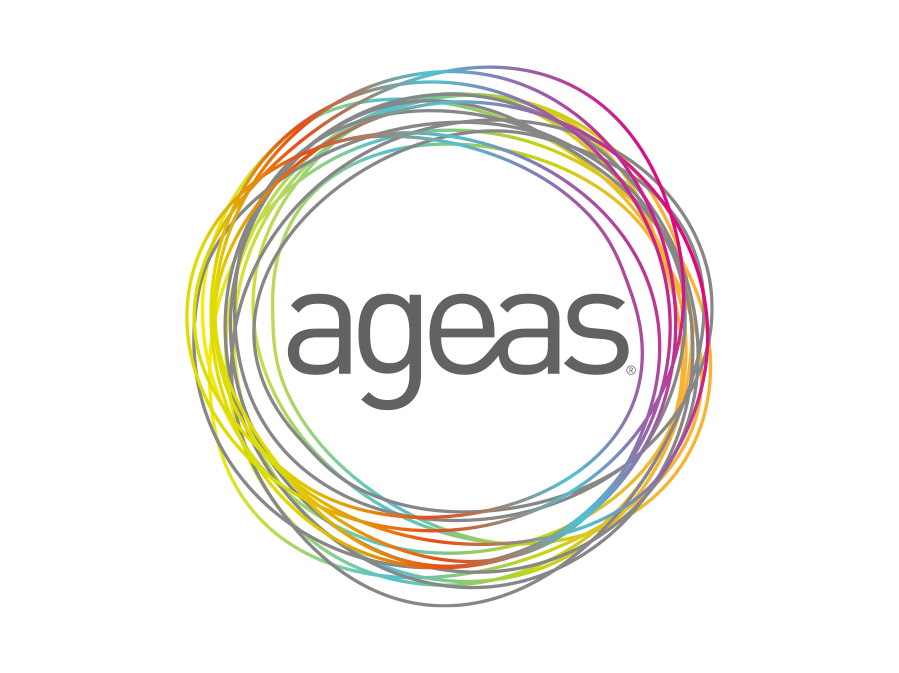Average Cost of Family Private Health Insurance UK 2025 Update

As an FCA-authorised broker that has helped arrange over 800,000 policies, WeCovr provides expert insight into the real costs of UK private medical insurance. This guide breaks down what your family can expect to pay in 2025, helping you make a truly informed decision for your loved ones' health.
WeCovr compares the real costs of family PMI across top insurers
Navigating the world of private medical insurance (PMI) can feel like a maze of complex terms, varying prices, and endless options. For families, the decision is even more critical. You want the peace of mind that comes with fast access to high-quality healthcare, but you also need a policy that fits your budget.
This is where we come in. In this comprehensive 2025 guide, we will demystify the costs of family health cover in the UK. We'll explore the average premiums you can expect, break down the factors that influence these prices, and compare what the leading UK insurers have to offer. Our goal is to give you the clarity and confidence to choose the right protection for your family's future.
What is the Average Cost of Family Private Health Insurance in the UK for 2025?
Let's get straight to the point. The cost of a family private health insurance policy is not one-size-fits-all. It's tailored to your unique circumstances. However, based on our extensive market analysis and current 2024 data projected for 2025, we can provide some reliable estimates.
Medical inflation—the rising cost of healthcare technology, drugs, and services—typically runs higher than general inflation, often between 7% and 10% annually. Our 2025 figures account for this trend.
Here are some illustrative monthly premiums for different family types on a mid-range policy with a £250 excess, living outside of London.
| Family Profile | Estimated Average Monthly Cost (2025) | Key Considerations |
|---|---|---|
| Young Couple (Both 30) | £80 – £130 | Lower risk profile means more affordable premiums. Ideal time to start a policy. |
| Family with Young Children (Parents 35, kids 5 & 8) | £150 – £250 | Adding children increases the cost, but some insurers offer discounts for the second child. |
| Family with Teenagers (Parents 45, kids 14 & 16) | £220 – £380 | Premiums rise with the age of all family members. Teenagers are more expensive to insure than young children. |
| Single Parent Family (Parent 40, child 10) | £110 – £180 | More affordable than a two-parent policy but reflects the parent's age. |
Important Note: These figures are for guidance only. The final price you pay will depend on the specific factors we explore below. The best way to get an accurate figure is to get a personalised quote.
Key Factors That Influence Your Family's PMI Premium
Understanding what drives the cost of your policy is the first step towards finding the best value. Insurers use a range of factors to calculate your premium, much like they do for car or home insurance.
1. Age of Family Members
This is the single biggest factor. As we get older, the likelihood of needing medical treatment increases, so insurers charge higher premiums. The cost can rise significantly once you enter your 40s and 50s. A policy for a family with parents aged 50 will be considerably more expensive than for a family with parents aged 30, even if all other factors are identical.
2. Your Location
Where you live in the UK has a direct impact on your premium. This is often called the "postcode lottery." Insuring a family in Central London, where hospital charges and consultant fees are highest, can cost up to 50% more than insuring the same family in a rural part of Scotland or Wales. Insurers group postcodes into different pricing bands based on the cost of local private medical facilities.
3. The Level of Cover
You can tailor your policy to your needs and budget by choosing different levels of cover.
- Basic/Budget Plans: These typically cover in-patient and day-patient treatment only (when you need a hospital bed). They often have limits on payouts and may not include diagnostics like MRI scans.
- Mid-Range/Standard Plans: The most popular choice. These plans include everything in a basic plan plus comprehensive out-patient cover for specialist consultations, diagnostic tests, and scans up to a certain limit (e.g., £1,000 - £1,500).
- Comprehensive Plans: These offer the highest level of protection. They usually have unlimited out-patient cover and may include additional therapies (physiotherapy, osteopathy), mental health support, and alternative treatments.
4. Your Policy Excess
An excess is the amount you agree to pay towards a claim before the insurer covers the rest. It's a standard feature of most insurance policies.
- How it works: If you have a £250 excess and your treatment costs £3,000, you pay the first £250, and your insurer pays the remaining £2,750.
- Impact on cost: Choosing a higher excess (e.g., £500 or £1,000) will lower your monthly premium. It's a trade-off between a lower regular payment and a higher one-off cost if you need to claim.
5. Your Choice of Hospital List
Insurers offer different tiers of hospitals you can use.
- Local/Regional List: Restricts you to a list of specified hospitals in your area. This is the cheapest option.
- National List: Gives you access to hundreds of private hospitals across the UK, excluding the most expensive ones in Central London. This is the most common choice.
- Premium/London List: Includes everything in the national list plus the top-tier private hospitals in Central London (e.g., The London Clinic, The Cromwell). This is the most expensive option.
6. Underwriting Method
This is how the insurer assesses your medical history.
- Moratorium (Most Common): You don't need to declare your full medical history upfront. The insurer will automatically exclude any conditions you've had symptoms, treatment, or advice for in the last 5 years. However, if you remain symptom-free for a continuous 2-year period after your policy starts, those conditions may become eligible for cover.
- Full Medical Underwriting (FMU): You complete a detailed health questionnaire. The insurer reviews your medical history and decides what will be excluded from day one. This provides certainty but can mean more permanent exclusions.
2025 Cost Comparison: Top UK Private Health Insurers
To give you a clearer picture, we've compiled a comparison of the UK's leading PMI providers. The following table provides an estimated monthly cost for a family of four (parents aged 40, children aged 10 and 12), non-smokers, living in Manchester, on a mid-range policy with a £250 excess and a national hospital list.
| Insurer | Estimated Monthly Premium (2025) | Key Features & Strengths | Best For |
|---|---|---|---|
| Bupa | £240 - £290 | Strong brand recognition, extensive hospital network, direct cancer cover without time limits. | Families seeking comprehensive, no-fuss cover from a trusted name. |
| AXA Health | £230 - £280 | Excellent mental health support, 'Expert Select' guided option for lower premiums, strong digital tools. | Families who prioritise mental wellbeing and are happy with a guided healthcare journey. |
| Aviva | £215 - £265 | Often very competitive on price, 'Expert Select' hospital option, strong digital GP service. | Budget-conscious families looking for solid, reputable core cover. |
| Vitality | £200 - £250 (before rewards) | Unique wellness programme that rewards healthy living with discounts and perks, potentially lowering premiums. | Active families who want to be rewarded for staying healthy and engaging with the plan. |
| The Exeter | £225 - £275 | Known for excellent customer service, community-rated pricing for older members, covers conditions that others may not. | Families seeking a more personal touch and long-term pricing stability. |
A Closer Look at the Providers
- Bupa: As one of the giants of UK health insurance, Bupa offers robust and straightforward policies. Their 'Bupa from Home' service provides excellent remote access to nurses and GPs.
- AXA Health: AXA stands out for its focus on mental health, often providing more extensive therapy and counselling sessions than competitors. Their 'Expert Select' model, where they guide you to a pre-approved specialist, helps keep costs down.
- Aviva: A household name in UK insurance, Aviva consistently offers some of the most competitive prices for family PMI. Their Aviva Digital GP is highly rated and easy to use.
- Vitality: Vitality has disrupted the market by linking health insurance to wellness. By tracking your activity through a smartwatch and engaging in healthy habits, you can earn points that reduce your premium and unlock rewards like cinema tickets and coffee.
- The Exeter: A mutual society owned by its members, The Exeter is often praised for its customer-centric approach. They are known for their flexible underwriting and clear policy documents.
An expert PMI broker like WeCovr can help you compare these providers on a like-for-like basis, ensuring you understand the subtle but important differences in their policy wording and cover levels.
The Crucial Point: Pre-existing and Chronic Conditions are NOT Covered
This is the most important exclusion to understand in UK private medical insurance. Standard PMI is designed to cover acute conditions that arise after you take out your policy.
Let's break this down in plain English:
- Acute Condition: A disease, illness, or injury that is likely to respond quickly to treatment and lead to a full recovery. Examples include a broken arm, appendicitis, cataracts, or a joint replacement. PMI is designed for these.
- Chronic Condition: A disease, illness, or injury that has one or more of the following characteristics: it needs long-term monitoring, has no known cure, requires ongoing management, or is likely to recur. Examples include diabetes, asthma, high blood pressure, and arthritis. PMI does not cover the routine management of chronic conditions.
- Pre-existing Condition: Any medical condition for which you have experienced symptoms, received medication, or sought advice from a medical professional in the years before your policy starts (usually the last 5 years). These are also excluded from cover, at least initially.
Why is this the case? PMI is designed to complement the NHS, not replace it. The NHS provides excellent care for long-term chronic conditions and emergencies. Private insurance fills the gap by providing rapid access to treatment for new, curable conditions, helping you bypass waiting lists.
How to Reduce the Cost of Your Family Health Insurance
Want the protection of PMI without breaking the bank? There are several effective ways to manage your premium.
- Increase Your Excess: As mentioned, choosing a £500 or £1,000 excess instead of £100 or £250 will significantly reduce your monthly payments.
- Choose a 'Guided' Option: Many insurers, like AXA and Aviva, offer a "guided" or "Expert Select" option. This means if you need to see a specialist, the insurer will give you a shortlist of 2-3 pre-approved consultants to choose from. This network control allows them to manage costs and pass the savings on to you through lower premiums.
- Review Your Hospital List: Be realistic about which hospitals you need access to. Unless you live or work in Central London and are determined to use its top private hospitals, a national or even a regional list will likely suffice and save you money.
- Opt for the '6-Week Wait' Option: This is a clever way to blend NHS and private care. With this option, if the NHS waiting list for your required in-patient procedure is less than six weeks, you will be treated on the NHS. If the wait is longer than six weeks, your private policy kicks in. This can reduce your premium by 20-30%.
- Pay Annually: Most insurers offer a small discount (around 5%) if you pay your entire annual premium upfront.
- Use an Independent Broker: A specialist private medical insurance broker like WeCovr doesn't just give you a price. We conduct a full market review to find the policy that offers the best value for your family's specific needs. Our service is free to you, as we are paid by the insurer you choose. We often have access to deals and can provide insights you wouldn't get by going direct.
Is Family Private Medical Insurance Worth It in 2025?
With household budgets under pressure, it's a valid question. The value of PMI is a personal calculation, balancing cost against peace of mind and tangible benefits.
According to NHS England data, the median waiting time for consultant-led elective care was around 15 weeks in mid-2024, with over 300,000 patients waiting more than a year for treatment. These figures highlight the primary benefit of PMI: speed.
The Pros:
- Bypass NHS Waiting Lists: Get diagnosed and treated in weeks, not months or years.
- Choice and Control: Choose your specialist, your hospital, and a time for treatment that suits your family's schedule.
- Comfort and Privacy: Recover in a private room with an en-suite bathroom, more flexible visiting hours, and often better food.
- Access to Specialist Drugs and Treatments: Gain access to breakthrough cancer drugs or treatments that may not be available on the NHS due to cost or pending approval.
- Peace of Mind: Knowing you have a plan in place to protect your family's health can significantly reduce worry and stress.
The Cons:
- The Cost: It's an additional monthly expense that will increase over time as your family ages.
- The Exclusions: It doesn't cover everything. Chronic conditions, pre-existing conditions, emergency care (A&E), and cosmetic surgery are standard exclusions.
- You Might Not Use It: You could pay for years and never need to make a claim, though the same is true for any insurance.
For many families, the ability to get a child seen by a specialist quickly or for a parent to have a necessary operation without a long, painful wait is a benefit that far outweighs the cost.
Beyond the Core Cover: Added Value and Wellness Benefits
Modern PMI is evolving. Insurers are increasingly focused on keeping you healthy, not just treating you when you're ill. These added-value benefits can be incredibly useful for families.
- 24/7 Virtual GP: Speak to a GP via phone or video call anytime, anywhere. This is perfect for busy parents, allowing you to get a prescription or referral without taking time off work or waiting for a surgery appointment.
- Mental Health Support: Most policies now include access to telephone counselling or a set number of face-to-face therapy sessions, providing crucial support for issues like anxiety, depression, and stress.
- Wellness and Rewards: As pioneered by Vitality, many insurers now offer discounts on gym memberships, fitness trackers, and healthy food. They actively encourage you to live a healthier lifestyle.
- Exclusive WeCovr Benefits: When you arrange your PMI policy through WeCovr, we provide complimentary access to our AI-powered calorie and nutrition tracking app, CalorieHero, to support your family's health goals. Furthermore, our clients often receive exclusive discounts on other policies, such as life insurance or income protection, helping you build a comprehensive financial safety net for less.
These benefits make a health insurance policy a tool for everyday wellness, not just a safety net for major medical events.
What is the difference between moratorium and full medical underwriting?
Does family private health insurance cover dental and optical care?
Can I add a newborn baby to my family policy?
Will my private health insurance premium go up every year?
Ready to Find the Right Cover for Your Family?
Comparing the market for private medical insurance can be time-consuming and confusing. Let the experts at WeCovr do the heavy lifting for you. Our friendly, professional advisors will listen to your needs, explain your options in simple terms, and compare policies from all the leading UK insurers to find the perfect fit for your family's health and budget.
Why private medical insurance and how does it work?
What is Private Medical Insurance?
Private medical insurance (PMI) is a type of health insurance that provides access to private healthcare services in the UK. It covers the cost of private medical treatment, allowing you to bypass NHS waiting lists and receive faster, more convenient care.How does it work?
Private medical insurance works by paying for your private healthcare costs. When you need treatment, you can choose to go private and your insurance will cover the costs, subject to your policy terms and conditions. This can include:• Private consultations with specialists
• Private hospital treatment and surgery
• Diagnostic tests and scans
• Physiotherapy and rehabilitation
• Mental health treatment
Your premium depends on factors like your age, health, occupation, and the level of cover you choose. Most policies offer different levels of cover, from basic to comprehensive, allowing you to tailor the policy to your needs and budget.
Questions to ask yourself regarding private medical insurance
Just ask yourself:👉 Are you concerned about NHS waiting times for treatment?
👉 Would you prefer to choose your own consultant and hospital?
👉 Do you want faster access to diagnostic tests and scans?
👉 Would you like private hospital accommodation and better food?
👉 Do you want to avoid the stress of NHS waiting lists?
Many people don't realise that private medical insurance is more affordable than they think, especially when you consider the value of faster treatment and better facilities. A great insurance policy can provide peace of mind and ensure you receive the care you need when you need it.
Benefits offered by private medical insurance
Private medical insurance provides numerous benefits that can significantly improve your healthcare experience and outcomes:Faster Access to Treatment
One of the biggest advantages is avoiding NHS waiting lists. While the NHS provides excellent care, waiting times can be lengthy. With private medical insurance, you can often receive treatment within days or weeks rather than months.
Choice of Consultant and Hospital
You can choose your preferred consultant and hospital, giving you more control over your healthcare journey. This is particularly important for complex treatments where you want a specific specialist.
Better Facilities and Accommodation
Private hospitals typically offer superior facilities, including private rooms, better food, and more comfortable surroundings. This can make your recovery more pleasant and potentially faster.
Advanced Treatments
Private medical insurance often covers treatments and medications not available on the NHS, giving you access to the latest medical advances and technologies.
Mental Health Support
Many policies include comprehensive mental health coverage, providing faster access to therapy and psychiatric care when needed.
Tax Benefits for Business Owners
If you're self-employed or a business owner, private medical insurance premiums can be tax-deductible, making it a cost-effective way to protect your health and your business.
Peace of Mind
Knowing you have access to private healthcare when you need it provides invaluable peace of mind, especially for those with ongoing health conditions or concerns about NHS capacity.
Private medical insurance is particularly valuable for those who want to take control of their healthcare journey and ensure they receive the best possible treatment when they need it most.
Important Fact!
We can look at a more suitable option mid-term!
Why is it important to get private medical insurance early?
👉 Many people are very thankful that they had their private medical insurance cover in place before running into some serious health issues. Private medical insurance is as important as life insurance for protecting your family's finances.👉 We insure our cars, houses, and even our phones! Yet our health is the most precious thing we have.
Easily one of the most important insurance purchases an individual or family can make in their lifetime, the decision to buy private medical insurance can be made much simpler with the help of FCA-authorised advisers. They are the specialists who do the searching and analysis helping people choose between various types of private medical insurance policies available in the market, including different levels of cover and policy types most suitable to the client's individual circumstances.
It certainly won't do any harm if you speak with one of our experienced insurance experts who are passionate about advising people on financial matters related to private medical insurance and are keen to provide you with a free consultation.
You can discuss with them in detail what affordable private medical insurance plan for the necessary peace of mind they would recommend! WeCovr works with some of the best advisers in the market.
By tapping the button below, you can book a free call with them in less than 30 seconds right now:
Our Group Is Proud To Have Issued 800,000+ Policies!
We've established collaboration agreements with leading insurance groups to create tailored coverage
























How It Works
1. Complete a brief form

2. Our experts analyse your information and find you best quotes

3. Enjoy your protection!

Any questions?
Learn more

Who Are WeCovr?
WeCovr is an insurance specialist for people valuing their peace of mind and a great service.👍 WeCovr will help you get your private medical insurance, life insurance, critical illness insurance and others in no time thanks to our wonderful super-friendly experts ready to assist you every step of the way.
Just a quick and simple form and an easy conversation with one of our experts and your valuable insurance policy is in place for that needed peace of mind!